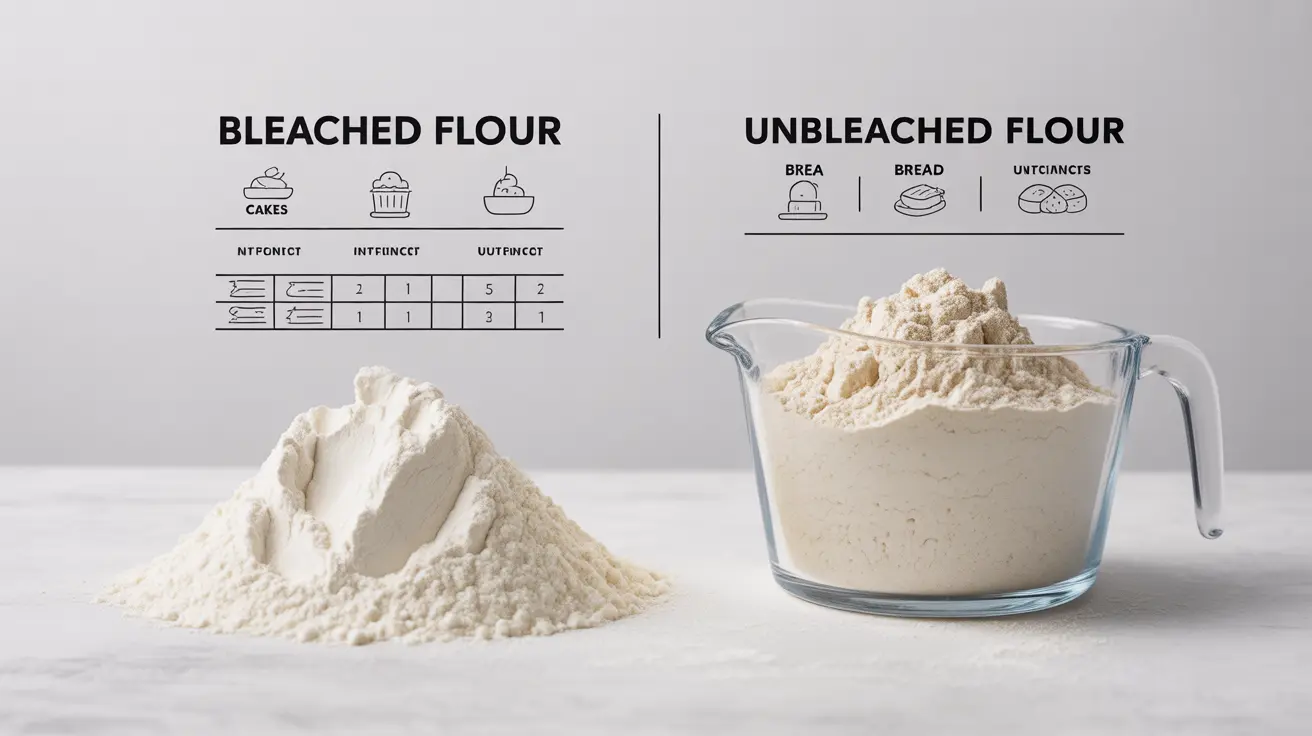When browsing the baking aisle, you've likely encountered both bleached and unbleached flour options. Understanding the differences between these two flour types is crucial for making informed decisions about your nutrition and baking needs. This comprehensive guide explores the health implications, processing methods, and practical applications of bleached versus unbleached flour.
Understanding Flour Processing Methods
The main distinction between bleached and unbleached flour lies in their processing methods. Unbleached flour undergoes natural aging, while bleached flour is chemically treated to speed up the aging process. This fundamental difference affects not only the flour's appearance but also its chemical composition and potential health impacts.
Chemical Treatments in Bleached Flour
Bleached flour is treated with various chemical agents to achieve its characteristic white color and texture. Common bleaching agents include:
- Benzoyl peroxide
- Chlorine gas
- Potassium bromate
- Calcium peroxide
These chemicals serve different purposes in the bleaching process, from whitening the flour to improving its baking properties. However, their use has raised concerns among health-conscious consumers.
Nutritional Comparison
Macronutrient Content
Both bleached and unbleached flour contain similar amounts of basic nutrients:
- Calories: approximately 455 per cup
- Protein: 13 grams per cup
- Carbohydrates: 95 grams per cup
- Fiber: 3 grams per cup
The primary nutritional differences stem from the processing methods rather than the basic nutrient content.
Micronutrient Differences
The bleaching process can affect certain nutrient levels in flour. Unbleached flour typically retains slightly more natural nutrients, including:
- Vitamin E
- Vitamin B1 (Thiamin)
- Vitamin B2 (Riboflavin)
- Vitamin B3 (Niacin)
Baking Properties and Uses
The choice between bleached and unbleached flour can significantly impact your baking results. Bleached flour typically produces softer, more tender baked goods, making it ideal for:
- Cakes
- Pastries
- Quick breads
- Cookie recipes
Unbleached flour, with its denser texture, works better for:
- Yeast breads
- Pizza dough
- Sturdy pastries
- Recipes requiring more structure
Safety Considerations
While both types of flour are generally considered safe for consumption, some studies suggest potential concerns about chemical residues in bleached flour. Countries like the European Union have banned certain bleaching agents, such as potassium bromate, due to possible health risks.
Frequently Asked Questions
What are the main differences in health effects between bleached and unbleached flour?
The main health differences lie in the chemical processing. Unbleached flour contains no chemical additives and retains slightly more natural nutrients. Bleached flour undergoes chemical treatment, which may leave trace residues but makes it more suitable for certain baking applications.
Is unbleached flour healthier than bleached flour because it is less processed?
While unbleached flour is less processed and free from chemical treatments, both types are still refined flour products. The health difference is minimal, though unbleached flour maintains slightly higher levels of natural nutrients.
Are the chemicals used in bleached flour, like potassium bromate and benzoyl peroxide, safe for human consumption?
While the FDA has approved these chemicals for flour treatment in the US, some countries have banned certain bleaching agents due to potential health concerns. The amounts used are strictly regulated, and the chemicals largely break down during processing and baking.
How does the nutritional content of bleached flour compare to unbleached and whole-wheat flours?
Bleached and unbleached flour have similar basic nutritional profiles, though unbleached flour retains slightly more natural nutrients. Both are significantly less nutritious than whole-wheat flour, which contains the bran and germ portions of the wheat kernel.
Which type of flour is better for baking bread and pastries: bleached or unbleached?
Unbleached flour is generally better for bread baking due to its higher protein content and stronger gluten development. Bleached flour is often preferred for tender baked goods like cakes and pastries because it produces softer, lighter results.




